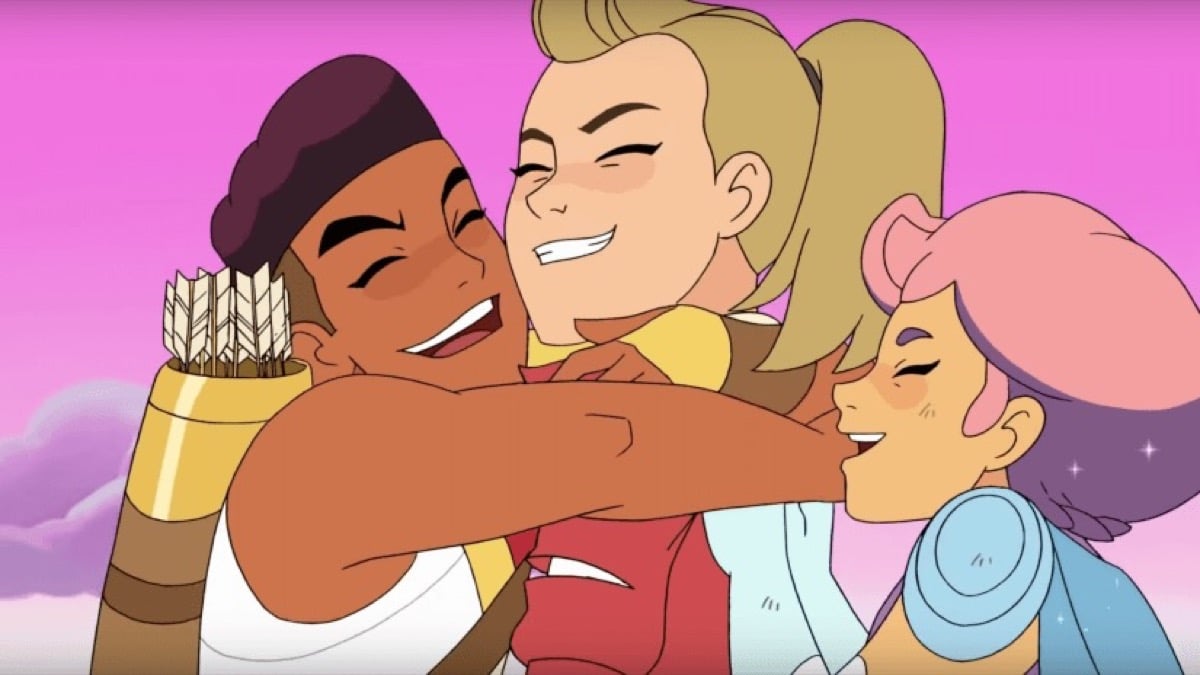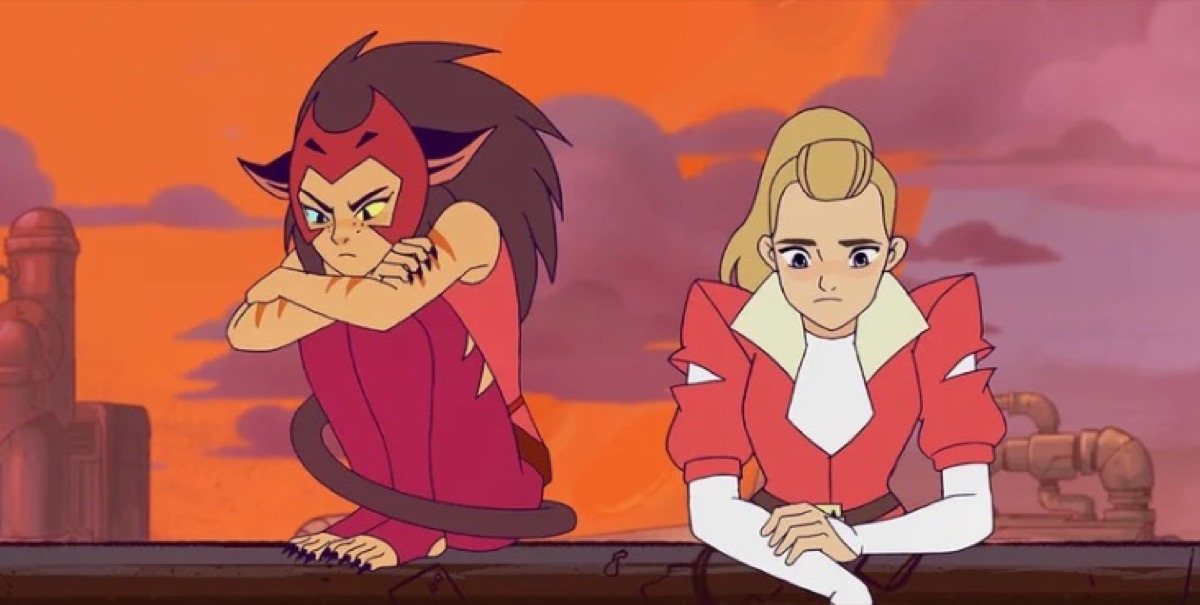The fourth season of She-Ra and the Princesses of Power broke me. Watching Adora and Glimmer’s friendship begin to crack like an overcharged runestone was pretty devastating, and along with sweet lovely Bow, I found myself longing for the Best Friend Squad to return to its former corny, campy glory.
Alas, creator Noelle Stevenson had other plans, and Glimmer and Adora’s issues were far from resolved by the end of the season. Yet, as much as it hurts to watch them grow further and further apart, it’s a brilliant move, one that reinforces the show’s knack for nailing the complexities of potentially toxic relationships, particularly toxic female friendships.
Because, as much as She-Ra and the Princesses of Power is about women supporting women, it’s also about women hurting, neglecting, manipulating, lying to, and betraying other women, however “noble” or “necessary” their excuse for doing so may be. That, in my humble opinion, is its greatest strength.
It’s not often we get to see such a wealth and breadth of fully realized female characters with equally realized flaws, much less in the same show. Stevenson has been vocal in the past about wanting to put female and queer characters with complicated relationships at the forefront of She-Ra, emphasizing the importance of showing them struggle and fail.
And boy does she deliver. Prior to the Best Friend Squad going separate ways, Catra and Adora had carried the brunt of the “complicated relationships” part. From best friends to enemies and possibly love interests (here’s hoping, anyway), their evolving cat-and-mouse dynamic is one of the show’s pillars.
Their bond is established from the get-go: Adora covers for Catra during a test, Catra curls up at the foot of Adora’s bed instead of sleeping in her own bunk, and they skive off into the woods together to blow off steam. But their differences are just as obvious early on, too, with Adora’s brave, driven, and focused attitude a jarring contrast to Catra’s calculated devil-may-care shtick.
By episode three of season one, the two have firmly established themselves on opposite sides of the fight for Etherea, but despite all the brutal battling, constant out-maneuvering, and occasional dancing, it’s always been clear to me that they’re just two gals trying to do their best with what they’ve got—which is mad fighting skills and even madder trauma. And it’s how they deal (or don’t) with this trauma that drives them forward—and ultimately drives them apart.
Yet, flashbacks and callbacks to the days when it was just the two of them against the world haunt the pair throughout the three seasons, particularly Catra. And who hasn’t been haunted, in one way or another, by the ghosts of lost friendships?
What’s even better is the way the show portrays these characters and their relationships as refreshingly, unapologetically female-coded. Though you wouldn’t want to get in the way of her claws, Catra’s most valuable qualities in her line of work are not brute strength or a taste for violence; they are her sheer resilience, unwavering adaptability, and aptitude for cunning—all usually female-coded attributes. Even golden girl Adora, whose physical aptitude is arguably her biggest asset, struggles with self-doubt and impostor syndrome. Is there anything more female-coded than that?
Of course, one of Catra’s less favorable attributes is her knack for pushing people away in order to steel herself against being hurt again. As a result, she can be cruel and ruthless, especially to friendly giant Scorpia, who is the only princess working for the Horde—and the only real friend Catra has had post-Adora, not that Catra realises this until it’s too late.
In Catra’s eyes, Scorpia finally setting off to join the Rebellion is vindication—that you can’t trust anyone, let alone your so-called friends—but for viewers, it’s so satisfying to watch Scorpia finally gather up the courage to leave a relationship that was so obviously toxic, to finally say “You’re a bad friend.”
The evolution of Catra and Adora and Catra and Scorpia’s relationships is familiar ground. Though I feel for Catra, I can’t blame Adora or Scorpia for cutting her out, especially after giving so much to make her happy with nothing but pain in return.
But things get way murkier when it comes to Glimmer and Adora. They both push each other’s boundaries and breech each other’s trust like never before in season 4. The stakes feel different now—the pressure higher and the trauma, old and fresh, catching up. Talking it out, especially when they’re both so unwilling to actually listen to one another, doesn’t help, and neither does hugging it out, much to Bow’s despair.
The questions their relationship raises are the same questions most of us will have asked ourselves at some point or another: What boundaries are sacred to me and why? What consequences will I adhere to if someone breaks them? What if someone I love does something I believe is fundamentally wrong?
But it also highlights the uglier, everyday aspects of female friendship in a way that feels painfully real, despite the rainbow and glitter explosions constantly raining down on Etherea—the subtle and not-so-subtle competition and the constant comparisons, sometimes due to society’s expectations and others simply because of our own insecurities.
However Adora and Glimmer’s issues are resolved—and I do hope they are resolved—I look forward to seeing Adora, Catra, and the Princesses of Power continue to love and hurt each other in the way only someone you deeply care about can. As much as it’s tough, it’s genuine—mind you, the rainbow and glitter explosions do help to ease the pain a little.
So hurry up, Netflix, and give us the grand finale already.
(images: Netflix)
Want more stories like this? Become a subscriber and support the site!
—The Mary Sue has a strict comment policy that forbids, but is not limited to, personal insults toward anyone, hate speech, and trolling.—









